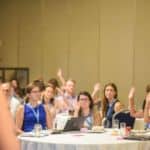‘Ready, Steady, Scale!’: A Practical Tool to Assess Your Social Business
A lot of faith has been put in the ability of social businesses to solve large-scale development challenges. And indeed there are social enterprises that have proven that it is possible to design – and successfully deliver – appropriate poverty solutions through inclusive business. However, only a handful have had a significant impact on the problems they are trying to solve. Time and again, internal or external pressures to achieve scale too quickly have jeopardized the chances of success for social businesses.
To scale in base-of-the-pyramid markets, social ventures need to spend time developing approaches that are often very different than those used in traditional businesses. They need to learn to operate and grow in complex, uncertain and resource-limited markets, and become highly adaptive to market and social context.
Is Your Social Business Ready for Scale?
In 2016, the MIT Practical Impact Alliance (PIA)* formed a working group to look at ways to advance scale-readiness in social ventures. Through monthly case presentations and discussions, the group developed “Ready, Steady, Scale!,” a guide with a series of checklists and 10 case studies, to help inclusive business practitioners better understand their organization’s readiness for scale and to clearly identify opportunities for improvement in four distinct areas: social impact, financial viability, internal capacity and external enablers.
Social impact:
For a social business, social impact is the actual “product” of the enterprise, with product or service delivery just a point on the value chain. So the first prerequisite to scaling a social business is to ensure that the social impact is a direct function of the company’s scale. Scaling can be distracting and social enterprises need to put safeguards in place to prevent mission drift and impact dilution during growth. Here is a sample of good social impact practices included in “Ready, Steady, Scale!”:
- Clearly define the social impact area you intend to affect and ensure alignment with your key stakeholders’ goals, including partners and funders
- Establish a clear definition of success that incorporates both social impact and scale
- Assess how your scaling strategy will affect your social impact and verify that your overall impact is not getting diluted
- Invest in a robust monitoring system to gather data in real time, evaluate your performance continuously against targets and implement adaptive actions

One Acre Fund (OAF), an organization that supplies smallholder farmers in East Africa with asset-based financing and agriculture training services to reduce hunger and poverty, defines success as a function of three key metrics: scale (number of people reached), impact and impact efficiency. OAF combines these three metrics to calculate the “total social good,” a key indicator used by OAF for scaling decisions.
Financial viability:
Whether a social enterprise is profit or not-for-profit, a key condition to scale is a financial model that is consistent and replicable as the organization grows. At larger scale, the need for operating capital is much higher, so philanthropic funding will rarely suffice. Hence, social businesses should be structured to continuously maximize the cost efficiency of impact delivery and to ultimately achieve financial independence. Here is a sample of good practices in regards to financial viability presented in our tool:
- Identify the minimum replicable business unit (MRBU) in your business model and set clear financial targets both for your MRBU and the overall business
- Correlate your financial targets with measurable operational key performance indicators (KPIs) and drive your operational performance toward those targets, but don’t over-optimize at the expense of impact performance
- Set clear social return on investment (SROI) targets for your philanthropic revenues and track them against competing interventions
- Leverage impact cost efficiency data for fundraising but strive for financial independence over time
- Define clearly your market selection criteria, pilot processes, success metrics and resources allocation criteria
- Before scaling in a new market, test your demand market saturation assumptions as well as your competitive edge against future competitors
- Make projections of your cost structure at different milestones of scale and build healthy margins in your pricing to support scaling and unforeseen costs

VisionSpring, a social enterprise providing affordable eyeglasses in resource-poor areas of the world, is a great example of financial viability as discussed above. By setting annual targets and tracking the philanthropic dollars per pair sold for each business unit, VisionSpring ensures a sustained level of philanthropic investment that allows the enterprise to scale without compromising on social impact.
Internal capacity:
Operating a social business at large scale requires committed and competent people, meticulous and rigorous processes, reliable and complementary partnerships, as well as efficient and expandable channels (supply chain, distribution and marketing). It also requires a culture of adaptive learning that enables organizations to evolve and adapt rapidly in order to meet the demands of larger groups of customers in new geographies or markets. Here are just some of the good practices we put together:
- Identify core processes to be standardized and document them in detailed handbooks, guidelines and operating procedures
- Leverage ICT to support the scaling of your core processes, boost their performance and enable real-time monitoring
- Ensure a mix of entrepreneurial skills and operational excellence in your higher management but also be ready to bring on new leadership with scaling experience when needed
- Ensure your partners’ alignment on mission and goals, transparency on risks and benefits, cultural fit, and complementarity of resources and competencies
- Project your supply chain needs at different levels of scale and invest in strengthening any weak links in your supply chain to avoid bottlenecks
- Leverage existing distribution channels (retail networks, village entrepreneur networks, public service networks) whenever possible
- Distinguish demand creation from sales activities, monitor your conversion rates and invest in higher return strategies

Living Goods, a nonprofit organization operating in Uganda, Kenya and Myanmar, is building a sustainable distribution platform for products designed to fight poverty and disease in the developing world. They chose to pursue scale by investing heavily in rigorous processes for operation management and expansion, as well as in digital tools to improve field performance, management performance and patient compliance.
External enablers:
Many barriers to scale are outside the direct control of social businesses, as they stem from broader market or industry constraints. A growing number of inclusive business ecosystem enablers are working to lower these systemic barriers. The good practices listed below were initially developed by the BoP Innovation Center, to orient such organizations to investment opportunities for strengthening local inclusive business ecosystems:
- Create a coalition of sector organizations and companies to unravel qualitative insights of BoP markets leveraging ICT technologies and conduct longitudinal impact analyses
- Accelerate the development of blended curricula that include “inclusive business” at their core, especially in business schools and academia in Africa and Asia
- Form coalitions that can lobby for the government’s role in developing and enforcing quality standards and brand protection laws; favorable fiscal regimes; and relaxing laws on commercial borrowing for social businesses
- Support more innovative funding mechanisms and increase partnerships between funds to mutualize costs and increase potential returns
- Develop a dual agenda on technical assistance and investment toward impact investors

Through research, convening, and advocacy, the Global Off-Grid Lighting Alliance (GOGLA), an independent, not-for-profit off-grid solar energy industry association, is working to address several external barriers to industry growth, including limited access to finance, an inadequate policy environment, and the poor-quality products swamping nascent markets.
To illustrate some of the concepts and best practices presented above, we have completed our tool with a collection of key lessons extracted from the 10 cases studies. To keep it practical, we focused on one or two key lessons from each case as it pertains to scale readiness. We encourage you to review the full publication and hope you will enjoy “Ready, Steady, Scale!” as much as we enjoyed developing it. We look forward to hearing your thoughts and suggestions for improving it.
*About The MIT Practical Impact Alliance: Led by MIT D-Lab, the Practical Impact Alliance (PIA) is a membership group that brings together leaders from diverse organizations with aligned missions to share knowledge, collaborate and develop best practices. PIA member organizations include corporations, international nongovernmental organizations, government agencies and social ventures. Through PIA’s activities (working groups, summits, innovation challenges, etc.), member organizations can increase their individual and collective impact – all while leveraging and supporting the work of MIT programs focusing on global poverty alleviation. The working group on scale readiness was co-led by D-Lab, Danone Communities and BoP Inc. It included representatives from multinational companies Ajinomoto, Johnson & Johnson, Medtronic and SC Johnson, corporate foundations Siemens Stiftung (Empowering People Network) and the OCP Phosboucraa Foundation, international nonprofits World Vision and Mercy Corps, USAID‘s Global Development Lab Development Innovation Ventures, and social ventures Greenlight Planet, Living Goods and Smart HydroPower. Guest speakers included representatives from Evidence Action, Once Acre Fund, VisionSpring, Fenix International, GOGLA, Hydrologic (iDE), and Jain Irrigation Ltd. D-Lab collaborated with the BoP Innovation Center (BoP Inc.) and Danone communities on developing the final publication.
Saida Benhayoune, who joined the MIT D-Lab staff in 2011, launched the D-Lab Scale-Ups fellowship program, an acceleration platform for MIT social innovators and entrepreneurs bringing technologies to market; the MIT Practical Impact Alliance; several research efforts; and co-founded the MIT Scaling Development Ventures Conference.
Photos courtesy of Evidence Action
- Categories
- Social Enterprise



